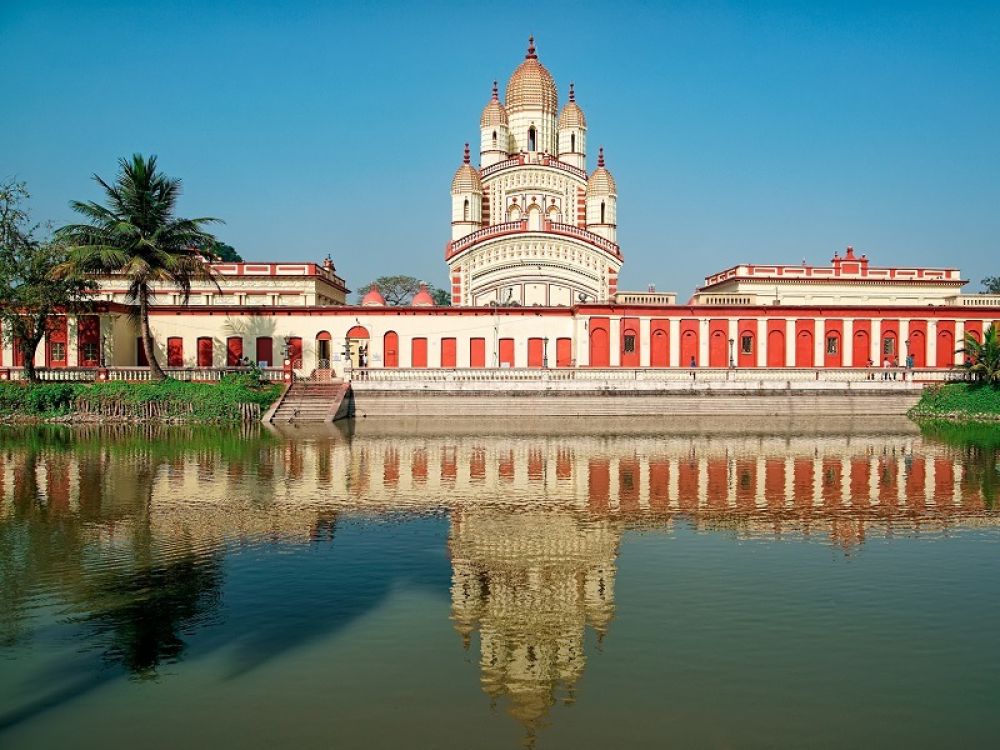

The Dakshineswar Kali Temple is not just a cultural emblem of Kolkata but a significant milestone in the spiritual journey of countless devotees. Situated on the eastern bank of the Hooghly River, the temple has been a major pilgrimage site for the worship of the divine Mother Goddess, Kali, since its inception in the mid-19th century.
The history of the temple's establishment is closely linked to the influential religious and social reformer, Sri Ramakrishna Paramahamsa, who served as its priest. Built in 1855 by philanthropist Rani Rashmoni, the temple complex has long been a site for religious convergence, showcasing the grandeur of Bengali architecture. It was from this hallowed ground that Sri Ramakrishna propagated his message of universality of religions and the oneness of God.
With the passage of time, the Dakshineswar Kali Temple has transformed from a spiritual epicenter for locals to a globally recognized tourist destination. Initially visited by spiritual seekers and devotees, the temple now attracts tourists from various backgrounds. The practice of footfalls recording indicates a steady increase in visitors with the turn of the 21st century.
As travel became more accessible and the world more interconnected, the temple gained prominence on the international stage, bolstered by the emphasis on global religious tourism circuits. Scholars and history enthusiasts also flock to this temple due to its association with the teachings and philosophies of Sri Ramakrishna and his disciple, Swami Vivekananda.
The tourism landscape around Dakshineswar has been enhanced by the development of transportation links like the Dakshineswar Metro, improved infrastructure, and inclusive tourist services catered to a global audience. As of now, there has been a shift towards experiential tourism, where visitors are not only interested in sightseeing but also in engaging with the cultural and spiritual practices at the temple.
Eco-friendly tourism initiatives are also gaining traction, with the local authorities focusing on sustainability to preserve the serenity and cleanliness of the sacred space. The offerings of authentic Bengali cuisine, combined with immersive cultural experiences such as observing aarti ceremonies and participating in festivals, have become particularly popular among tourists seeking to understand the local ethos.
Harnessing the power of digital media, the West Bengal Tourism Department has actively promoted the Dakshineswar Kali Temple through various platforms, spotlighting its historic and spiritual significances. Visitor-friendly amenities such as guided tours, multilingual support, and improved security have been introduced to facilitate an enriching experience for both domestic and international tourists.
In conclusion, the Dakshineswar Kali Temple stands as a testament to the evolution of religious tourism in India. Its history is not just an account of religious reverence but the tale of a spiritual abode that has seamlessly integrated tradition with modern tourism trends. The focus on sustainability and deeper cultural engagement is set to define the future trajectory of tourism around this sacred temple in Kolkata.